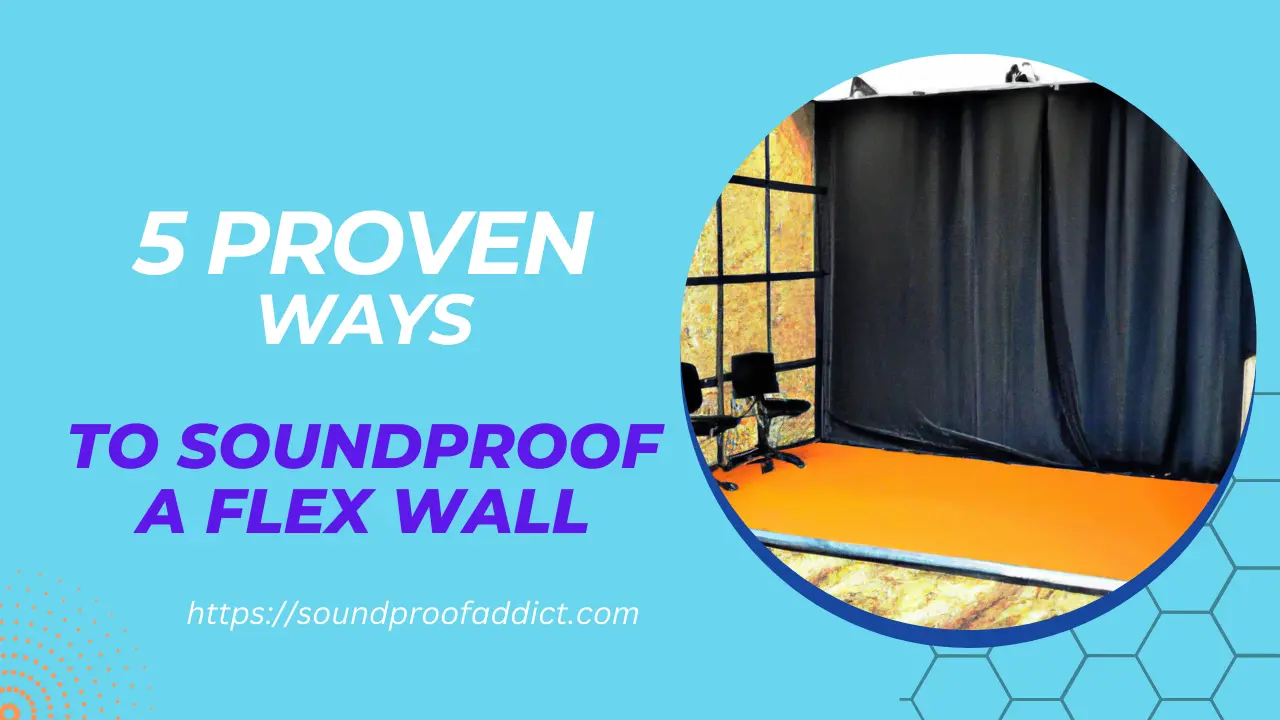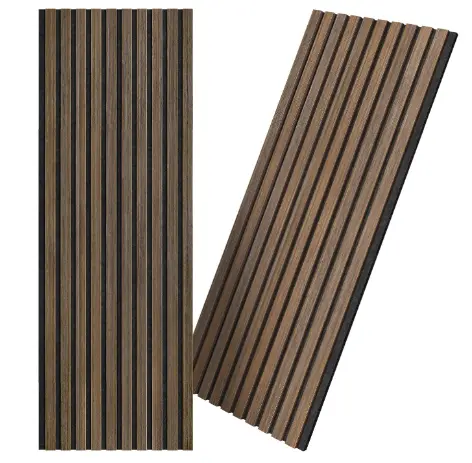How to soundproof a flex wall? {5 Proven ways}

It is no secret that flex walls offer a versatile solution for various architectural needs, but they often come with a downside: noise leakage.
Flex walls are generally not good at stopping noise, which can be a real pain.
Whether you’re working from home, living in a bustling neighborhood, or simply seeking some peace, soundproofing a flex wall becomes a crucial task.
So in today’s post, I am going to give you 5 proven ways to soundproof a flex wall. Let’s get into it…
5 Proven ways to soundproof a flex wall
1: Use wood wall diffusion panels
In my opinion, using wood wall diffusion panels is the best way to soundproof a flex wall. This is what wood wall diffusion panels look like:

These panels are made from different combinations of materials for effective noise reduction.
In addition to their sound diffusion capacity, they are also very good at sound absorption and they are very very aesthetically pleasing.
All you need to do is just install these panels on your flex wall using screws and enjoy the soundproofing benefits.
However, this product is very expensive, it might cost you even more than $500 to soundproof the flex wall.
2: Install plywood with a layer of MLV
Installing plywood with a layer of MLV sheet is a highly effective way to block sound passing through the wall.
This technique can reduce the noise by up to 35 dB and the best part is that it is not as expensive as installing wood wall diffusion panels. To install this to your flex wall:
- First of all, cut the MLV sheet to the size of the wall.
- Then attach it to the wall using one or half-inch nails on the corners only.
- After that, place the plywood sheet over the MLV and fasten it in place using screws.
This is all you need to do.
3: Attach acoustic foam panels
Attaching acoustic foam panels is a super affordable way to reduce some noise passing through the flex wall.
While these foam panels are good at absorbing high-frequency sounds, their impact may not be as substantial.
I mean, they suck as absorbing mid-low frequency sound. This option might be good for you if you hardly don’t want to make a significant investment.
4: Install drywall
Drywall is one of the top materials for soundproofing. It effectively blocks the sound that tries to pass through them and is an excellent choice for soundproofing flex walls.
To use it for soundproofing the flex wall:
- First, measure your flex wall and purchase enough ⅝ drywall.
- Once you have it, install it to the flex wall using drywall screws by placing screws every 16 inches apart.
- Repeat this process until the entire flex wall you wish to soundproof is adequately covered.
5: Install heavy curtains against the wall
Soundproofing curtains are a pretty good option out there that can be used for noise reduction through walls, doors, and even windows.
They can reduce the noise by up to 23 dB, and also they are available for under $70, which is not cheap but very affordable.
Related post: How effective are soundproof curtains?
To use these curtains to soundproof your flex wall, you just need to hang them to the wall using a curtain rod. You may need more than one curtain if you have a wider wall.
Frequently Asked Questions
How to fix a gap in a flex wall to prevent noise seeping?
To fix a gap in a flex wall to prevent noise seeping, first, identify the gap or weak points on the wall and green glue and apply an acoustical sealant to seal the gap and stop noise seeping.
How to fill the space between the top of a flex wall to the ceiling?
The best way to fill the space between the top of a flex wall to the ceiling is by using plywood or drywall. I prefer drywall due to its significant soundproofing capabilities.
Simply measure the dimensions of the gap, cut the drywall accordingly, and then install it onto the flex wall using screws.
Is mass-loaded vinyl (MLV) effective for flex walls?
Yes, Mass-Loaded Vinyl (MLV) is an effective soundproofing solution for flex walls. MLV is dense and resilient, making it an excellent barrier against sound transmission.
